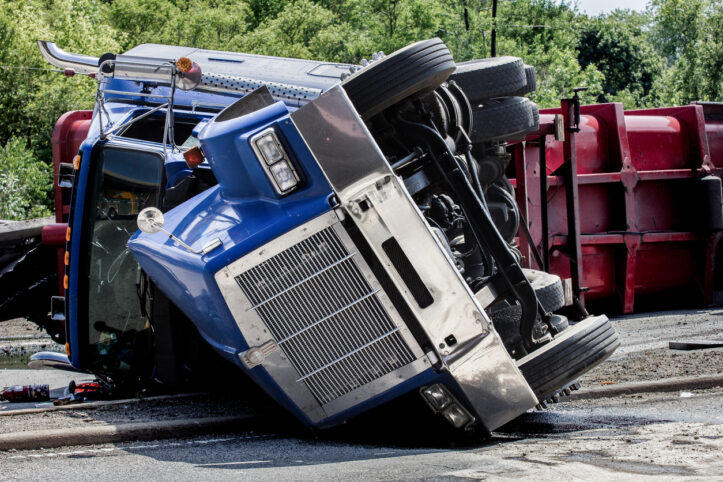
Oregon Salmon Spill: Legal and Environmental Implications of Truck Accident
When a truck transporting over 100,000 salmon overturned in Oregon, it could have been a catastrophic loss for the fish, which were destined to boost local populations in the Imnaha River. However, in a fortunate turn of events, over 70,000 of these fish ended up in a nearby creek and are likely to survive.
The incident occurred on March 29 in northeast Oregon, as reported by the Oregon Department of Fish and Wildlife. The truck, a 53-foot vehicle, was carrying 102,000 spring Chinook smolts, young salmon at a crucial stage of transitioning from freshwater to the open ocean. The accident happened on a sharp turn, causing the truck to tip onto its passenger side, slide across the road, and tumble over a rocky embankment, ultimately landing upside down.
The driver sustained minor injuries. Fortunately, the majority of the salmon found their way into Lookingglass Creek, a tributary of the Grande Ronde River, with about 77,000 of the smolts managing to enter the creek. They are expected to return to spawn in future years.
However, not all were fortunate—25,529 smolts perished, their bodies retrieved either from the tanker or along the creek bank. The intended destination for the salmon was the Imnaha River, located in the Wallowa-Whitman National Forest, which is 77 miles long. The loss represented about 20 percent of the year’s salmon release for that river. Fishery managers now anticipate approximately 500-900 fewer adult fish will return in 2026 and 2027 due to this incident.
The salmon are raised at Lookingglass hatchery and then transported to Imnaha to support population sustainability, according to Seth White, a professor in the department of Fisheries, Wildlife, and Conservation Sciences at Oregon State University and director of the Oregon Hatchery Research Center. He emphasized the resilience of salmon, noting their ability to survive and adapt to new environments quickly, which has allowed them to endure for millennia in a geologically active region. Many of the salmon that accidentally ended up in the creek are expected to survive due to their adaptable nature.
In the aftermath of the truck accident involving over 100,000 salmon in Oregon, several legal considerations come into play. Primarily, questions arise about liability for the accident, potential environmental impact, and compliance with transportation and wildlife regulations.
Liability and Negligence: From a legal standpoint, determining who is at fault in the truck accident is crucial. The incident could raise issues of negligence, particularly if the truck driver or the company responsible for the transportation failed to adhere to safety protocols or if the truck was not adequately maintained. The details reported, such as the truck rolling over on a sharp corner, could imply a need to investigate whether proper route planning and speed limits were followed. A Lake Oswego truck accident lawyer could help sort out the legal issues of a situation like this.
Environmental Laws and Impact: Given that the salmon were part of a conservation effort intended to replenish local populations, the spill could potentially involve environmental laws. If the accident led to significant ecological disruption, especially in the local creek where the salmon ended up, agencies such as the Environmental Protection Agency (EPA) or local conservation authorities might need to assess the impact. There could be implications under the Clean Water Act if the accident resulted in pollution or under the Endangered Species Act, depending on the status of the species involved.
Transportation and Wildlife Regulations: Transporting live animals, particularly for conservation purposes, is typically subject to stringent regulations to ensure their safety and well-being during transit. This includes state and federal regulations governing the handling and transportation of wildlife. The company and driver would need to demonstrate compliance with these regulations, including ensuring that the transportation method was appropriate for the type of wildlife being transported and that all required permits were in order.
Potential Litigation and Compensation: If negligence is established, there could be legal actions taken by state wildlife agencies or environmental groups seeking compensation for the damage to the planned conservation efforts. This could involve restitution for the lost salmon or funding for additional conservation measures to mitigate the impact of the loss on the local ecosystem.
In conclusion, the legal ramifications of this incident could be extensive, involving multiple facets of environmental, transportation, and wildlife law. Legal professionals would need to navigate a complex array of statutes and potential liabilities, making this not only a tragic accident but also a significant legal case with broader implications for wildlife conservation efforts and transportation safety standards.


